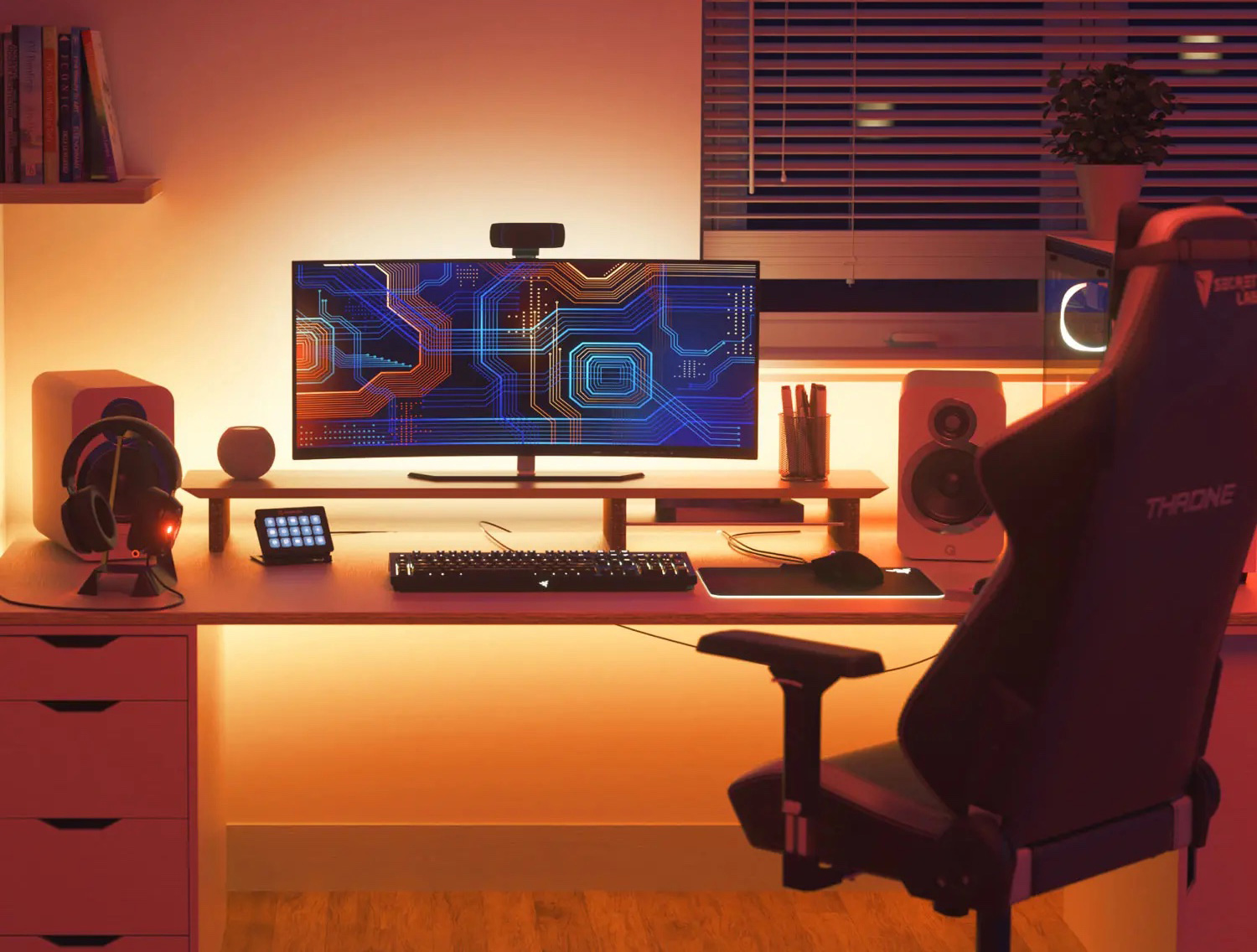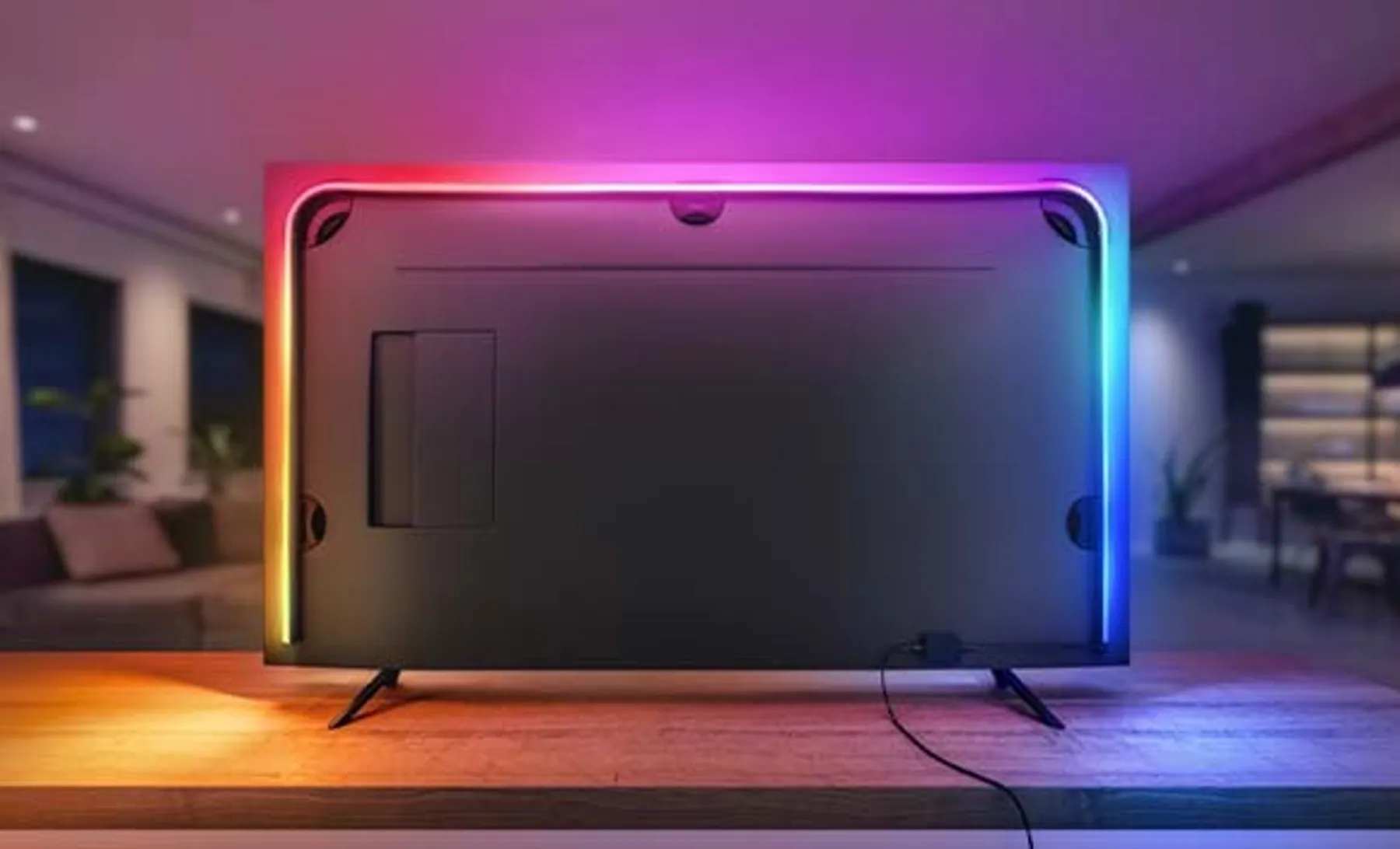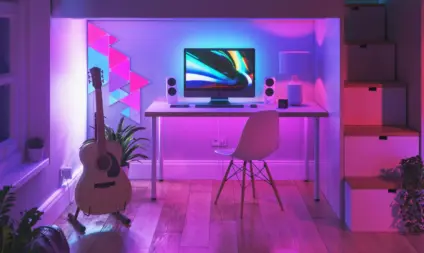
In today’s digital age, many activities are increasingly intertwined with digital devices, and many people find themselves spending countless hours in front of a computer monitor. However, prolonged screen time can lead to eye strain and discomfort. Whether you’re working from home or just enjoying some leisure time, it’s crucial to think about the comfort of your eyes. Monitor backlighting with smart lights is one solution that can make a significant difference in your overall eye health.
What is monitor backlighting?
Monitor backlighting refers to the process of illuminating the rear or edges of your computer screen to reduce glare and contrast. Traditionally, this has been done using an LED backlight fixed behind the display panel. Modern solutions also include using a monitor light bar, which provides more focused lighting to ease eye strain.
Monitor backlighting has come a long way from just being a built-in feature of a computer screen. The advancement in technology has provided more focused and customizable solutions that not only add to your visual comfort but also make for a more personalized computing experience.
Benefits of monitor backlighting
When you’re sitting in front of a computer screen for hours on end, it’s easy to forget that your eyes are working hard to process the text, images, and other visual data on the screen. Monitor backlighting aims to make this task easier for your eyes by providing balanced illumination, which significantly reduces the amount of work your eyes have to do.
The idea behind all types of monitor backlighting—be it traditional LED, monitor light bars, or smart lights—is to create an ambient light source that reduces the contrast between the brightness of your screen and the darker area around it. By reducing this contrast, your eyes don’t have to work as hard to adjust to different light levels, ultimately reducing eye strain and fatigue, especially during extended periods of computer use.
Types of monitor backlighting

- LED backlight: The most commonly used form, an LED backlight is often integrated into the back of the monitor itself. These are usually very efficient and offer balanced lighting.
- Monitor light bar: This is a standalone device that you attach to your monitor. Unlike LED backlights, these are easier to install and can be adjusted for brightness and colour.
- Smart lights: Incorporating smart lights as a backlight source is an emerging trend. Smart lights can be controlled via mobile apps and offer features like adjustable colour and brightness, timers, and even syncing with your on-screen content.
- Smart lighting for entertainment: If you want to take your setup to the next level, consider smart entertainment lighting. These can interact with what you’re watching or playing, making the experience more immersive as well as comfortable.
LED backlight vs. monitor light bar
In the most basic form, monitor backlighting uses a series of LED lights placed behind the screen’s display. The LEDs emit a consistent light across the screen, illuminating it from behind. This is what allows you to see the images and text displayed on the monitor. The brightness and colour temperature of the LED backlight can often be adjusted via the monitor’s settings.
The monitor light bar is a more recent addition to the world of monitor backlighting. Unlike integrated LED backlights, a monitor light bar is an external accessory that you attach to the top or bottom of your monitor. These light bars are engineered to direct light away from the screen and towards the wall behind it, which in turn creates a softer, ambient light that is less harsh on the eyes. Additionally, these light bars often come with various settings to control brightness, colour temperature, and even colour itself, providing a more customized experience.
Using smart lights as monitor backlight
In the world of smart homes, smart lights have also found a place behind monitors. These lights can be fixed to the back of your monitor or strategically placed around your workspace to create ambient lighting. Controlled via a mobile app or even voice commands, smart lights offer a high degree of customization. You can adjust brightness levels, colour temperatures, and even sync them with your computer activities or set schedules.
For those interested in a more immersive experience, smart entertainment lighting solutions can be integrated into your computer setup. These advanced lighting systems can sync with the content you’re viewing, creating an even more engaging atmosphere. For example, if you’re watching a movie that has a sunrise, your smart lights could gradually brighten, mimicking the natural light in the movie scene.
Practical tips for setting up your monitor backlight
- Brightness and contrast: Adjust the brightness and contrast of your screen and backlight to similar levels. This ensures a balanced lighting environment.
- Colour temperature: Consider a warmer tone for your backlight, especially if you work long hours. This can help reduce eye strain.
- Positioning: Make sure that the backlight is not directly in your line of sight. It should be illuminating the back of the monitor or the wall behind it.
- Size matters: For larger monitors, consider using a monitor light bar or multiple smart lights to ensure even lighting.
- Automate: With smart lighting solutions, you can set schedules or triggers to adjust suitable lighting conditions automatically.

Monitor backlighting is a practical solution for reducing eye strain during long hours at your computer. With options ranging from the traditional LED backlight to advanced smart lights, there’s something for every need and budget. Paying attention to proper setup and making educated choices can result in a more comfortable and healthier screen time experience. So the next time you’re shopping for a new monitor, don’t forget to consider the backlighting options available. Your eyes will thank you.
This article was drafted using AI technology and then reviewed, fact-checked, and revised by a member of our editorial team.




